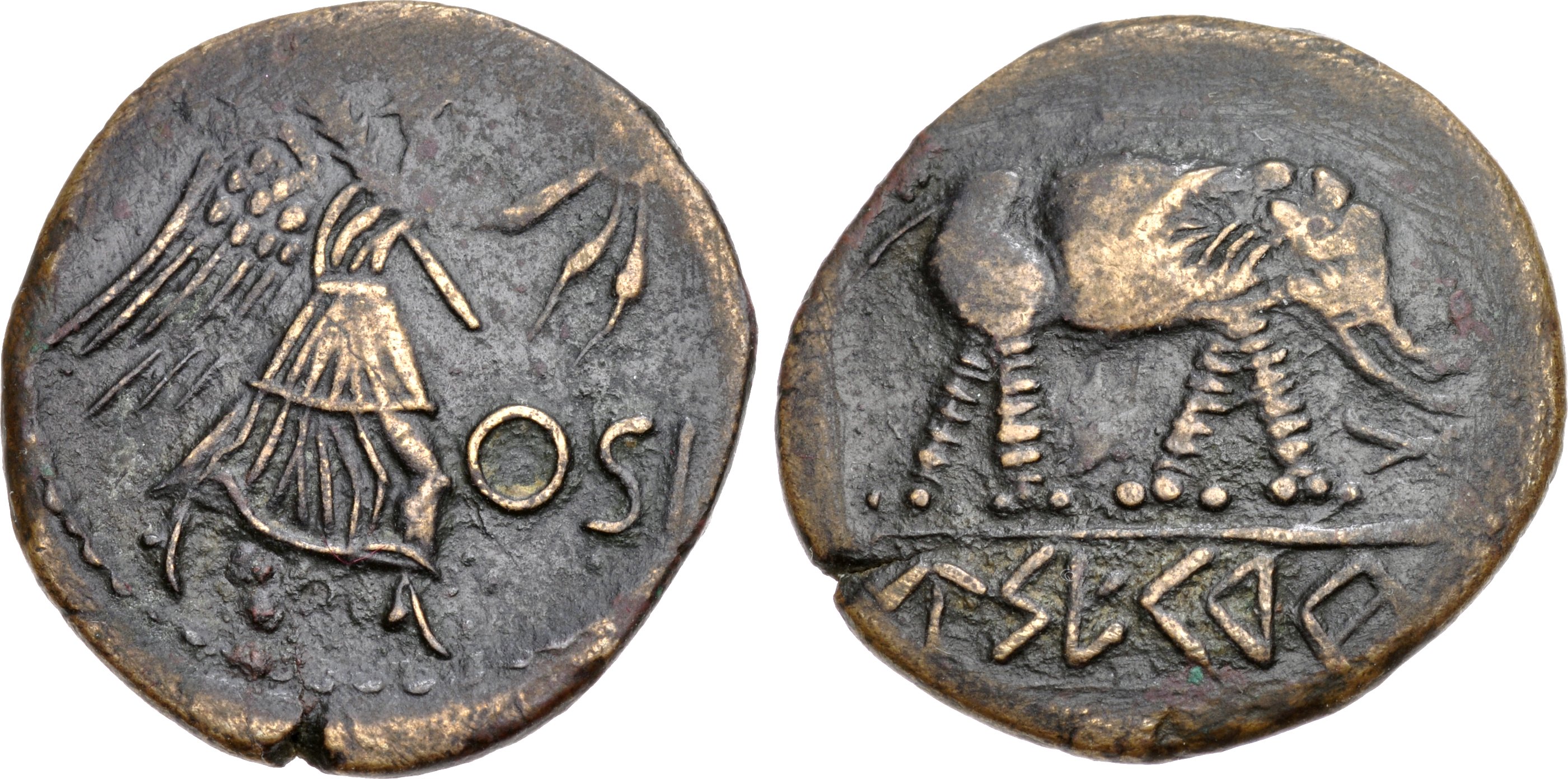All entries for Monday 12 August 2013
August 12, 2013
Caesar's elephant and Usekerte–Osicerda
 |
| Coin of Osicerda imitating a coin of Caesar |
Several coins in focus have examined the reception of Julius Caesar's imagery, the elephant and 'snake' coin he struck in 49 BC. A further example of the reception of this imagery is a bi-lingual coin issue struck by Usekerte-Osicerda in Spain (Villaronga and Benages 1292-3). The obverse of the coin imitates a quinarius struck in Rome in 47 BC. It shows Victory, accompanied by the Latin legend OSI, a reference to the issuing authority. As with many Iberian coins in this period, this issue is bilingual, naming the tribe or city in both Latin and Iberian (or another local language). The reverse imitates Caesar's coin type of an elephant trampling a 'snake' (exactly what the creature/object is remains the subject of debate), with the Iberian legend Usekerte in the exergue. The question is: why would Iberians imitate Caesar's coin in this manner?
One suggestion is that the coin was struck to celebrate a victory of Caesar in the region, perhaps Caesar's victory over Lucius Afranius and Marcus Petreius at the battle of Ilerda in 49 BC, or his success at the battle of Munda in 45 BC (M.G. Justo, 1996-7. Las acuñaciones de Usekerte/Osicerda. Annals de l'Institut d'Estudis Gironins, 36, 321-33). The mint of this piece may have been located close to where the battle of Ilerda took place, and so this seems a possible scenario. If this is the case the coin series must have been commemorative: the obverse, after all, imitates a coin of 47 BC, several years after Ilerda.
What this piece demonstrates is that the iconography used by Caesar and the Romans more broadly was seen and understood by Iberians, who could then appropiate the imagery to make their own statements of allegiance and support. The coin communicates Isekerte-Osicerda's support of Caesar during the civil wars - the elephant is a reference to Caesar and his coinage, while another Roman coin type, Victory, was appropriated to celebrate the success of Caesar in the region. Coin hoards suggest that Caesar's elephant type circulated in the region in quantity - the imagery would thus have been 'seen' as it moved from hand to hand. But instead of the legend CAESAR, this coin series has an Iberian legend, one of the last struck that carry the Iberian script.
(Coin image reproduced courtesy of Image reproduced courtesy of Classical Numismatic Group Inc., (Auction 91, lot 26) (www.cngcoins.com)).
 Clare Rowan
Clare Rowan

 Please wait - comments are loading
Please wait - comments are loading

 Loading…
Loading…